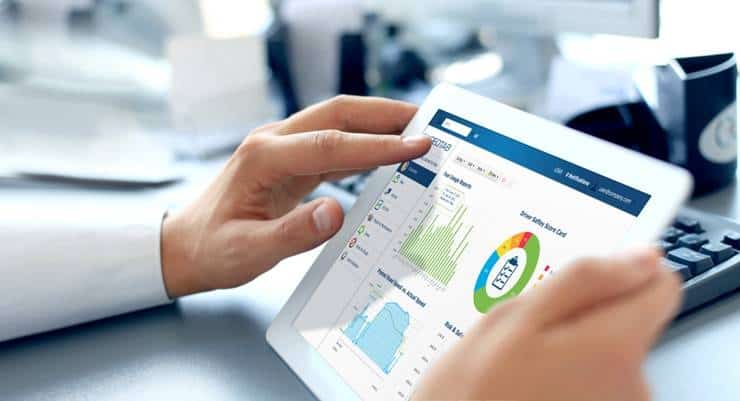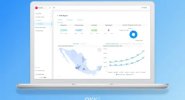Telematics technology has come a long way since fleet managers first used those early GPS devices that sported external antennas about 10 years ago. Back then, data collection was limited to vehicle location, which was processed by an in-house IT infrastructure. Today, telematics devices gather a wealth of data on engine performance, fuel consumption, fault codes, driver identity and safety, all of which can be processed and analyzed in a cloud hosted environment. The introduction of application programming interfaces (APIs) and software development kits (SDKs) have expanded the use of telematics even further by opening the data to developers for integration with other business systems, such as invoicing, maintenance, route planning, risk management and safety compliance.
The overriding drivers in this industry are the need to improve productivity and accountability by measuring how a company is using its fleet. There is also a critical need for better safety measures to reduce the number of road accidents and human casualties, as well as improved efficiency to ease ever-increasing traffic congestion. It’s anticipated that 2016 will be another exciting year in telematics as new technologies add more value to how businesses measure and manage their fleets.
#1: TELEMATICS DATA CONNECTS WITH BUSINESS PROCESSES AND OPERATIONS.
In 2016, telematics data will be mined and used for far more than tracking and tracing vehicles, or how to get from Point A to Point B. Telematics data can be extended beyond fleet management to other software systems in the company, thereby becoming a tool for optimizing entire business processes. A myriad of value-added business needs can be addressed. Telematics information collected from the field can be connected to accounting, payroll, driver training software, CRM or route planning systems, just to name a few. The integration of telematics data with other business systems creates a powerful business intelligence tool. More businesses are realizing that the value of telematics can be extended throughout their companies.
#2: SIMPLICITY WILL DRIVE CONNECTED VEHICLES.
There will be a lot of action in the connected vehicle space next year and a proliferation of driver applications that rely on in-vehicle connectivity. Vehicle connectivity enables telematics data to be processed and fed back not only to the fleet manager, but also to the drivers in real-time so that they can make informed decisions about their driving. For example, an app that adds weather information to route planning will help drivers avoid adverse, potentially dangerous, road conditions. Additionally, a driver training app can add real-time verbal feedback to drivers while they are behind the wheel to provide safer and more effective instruction. The key to encouraging the development of useful, relevant applications is simplicity. Telematics apps and the systems they run on need to work as simply as smartphones do with any app store. If an app is easy to use, drivers and fleet managers will take it on board.
Neil Cawse,
CEO,
Geotab

#3: SECURITY WILL BE A BIGGER PRIORITY FOR FLEET MANAGERS IN 2016.
There’s no doubt that the best profession to be in over the next five years is IT security. For anyone who produces software, security is the biggest issue. As fleet management systems are increasingly software-based, telematics data security will become an even bigger challenge for fleet managers. It only takes one weak link in the chain, one API error, to cause a huge amount of problems. However, securing telematics networks and protecting telematics data does not have to be overwhelming. We’ve found that taking a simple, systematic and even common sense approach to securing telematics devices, data centers and software is the best way to protect data against malicious hacks. Adding more accountability into the software development process also tightens security in the telematics platform. In 2016, we expect to see more fleet managers adopt secure software development processes, impose stricter rules for authorizing who can access certain data, provide security training across their organizations and promote best practices for data security.
#4: STOP-AND-GO PROGRESS FOR SELF-DRIVING CARS WILL BE TOP OF MIND.
The concept of a fully automated, driverless car is one of the most captivating tech ideas. For many of us, the concept seems truly futuristic and difficult to imagine as a reality. Progress toward the self-driving car, however, is well underway. Just look at some of the features in new car models - parallel parking and lane change assistance, rear cameras, sensors, automatic emergency braking - and you’ll see the early stages in the evolution of the self-driving car. For all the safety and business benefits that self-driving vehicles can provide, there seem as many downsides to the innovation from technical to legal. The challenge for the telematics industry is to take on the thorniest issues such as privacy, regulation, security and the potential for job losses. The security, legal and regulatory challenges are likely to represent bigger roadblocks than the technical challenges for self-driving cars. More industry-wide effort is needed to address those issues.
#5: MISSION CRITICAL APPLICATIONS NEED RELIABLE NETWORKS.
2016 Trends and Outlook Polls
Network reliability will be more important than ever in 2016. Our telematics systems are being used by sheriff’s departments and emergency services for mission critical applications. It is imperative that these networks remain up and running at all times, and that data transmission is not delayed or interrupted. Even for applications that are not time critical, fleet managers need reliable communications networks to benefit fully from the data that is collected and processed. The coverage and capacity of cellular networks will continue to improve, which will expand the reach and reliability of telematics systems. In addition, advances in data center technology and cloud computing will also improve the data processing capabilities of telematics systems. Another boost to reliability will come from an increase in operator certification programs, which can ensure specific geographic coverage. There is more work to be done to prevent communication breakdowns and error rates, however, especially since driver safety is ultimately at stake.
#6: CUSTOMERS NEED BETTER BENCHMARKING.
Showing businesses how they can improve their fleet management operations is an important trend for telematics service providers. It’s one thing to deploy a telematics system for businesses to track their vehicles, but it’s quite another to analyze the data collected and demonstrate tangible results for how operating costs are being saved or where fleet services are running inefficiently. Next year there will be an increase in the variety of benchmarking services offered by telematics providers. Based on various key performance indicators, such as route planning, vehicle maintenance or fuel consumption, telematics providers can offer insights into time and cost reductions. They can also flag where fleet managers can improve by highlighting more optimal routes.
About The Author:
Neil is a business leader, entrepreneur and engineer who has been starting and running his own businesses since 1992. He sold a software development company of over 100 engineers to Datatec in 1998. Geotab Inc. was started in 2000 by Neil and is now the largest telematics company in the world as measured by new vehicle subscriptions per year. The company has been voted one of the 50 fastest growing tech companies in Canada and top 200 in North America for 4 years running. Neil at his heart is an engineer and is involved day to day in the engineering decisions and work. Neil prides himself on the company’s integrity and its forward thinking ideals – including making sure the customer gets the right solution ahead of the company’s profits.



















